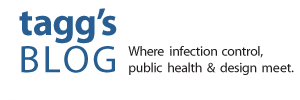One giant barrier to health communication is the fact that as you try to reach a broader and broader audience, the chances of them speaking the same language as you plummet. We simply can’t expect everyone to communicate in the exact same way – and misunderstandings can easily lead to harm.
There is a concept central to linguistics – languages tend to diverge over time. Take one small example – a group of friends has an in-joke: they refer to hamburgers using a code word. This is a reference that only they understand. Over time, it shortens and before long their friends’ friends are using it and nobody knows how the whole thing started!
Okay, that’s a silly example, but that’s how it starts. On a bigger scale, think about the English language. Is Vancouver English the same as Mississippi English? Will it be in fifty years? Now compare to the same language in the UK spoken by Londoners versus Glaswegians.

Urdu (top) and Hindi (bottom), written forms.
Image is in the public domain and sourced from Wikimedia Commons.
On an even bigger scale we have the Hindustani language. You’ve probably never heard of it, but you’ve possibly heard it – it’s what is known today as either Hindi or Urdu. These two languages diverged through the 1800s mostly due to the effects of the religions of local populations, and this shows as the two are mutually intelligible when spoken, but completely different in prose and writing style, with Hindi being influenced by Vedic scriptures and using Devanagari script, while Urdu was heavily influenced by Persian and Arabic writing and has a written form very similar to the latter. All this happened over only a couple hundred years!
This divergence happens all the time, from a small scale to a big one and we have to take it into account. As globalization has created a lingua franca or two and Hollywood’s English, Anime’s Japanese and Bollywood’s Hindi-Urdu hybrid make their way around the globe, we can learn two things: firstly, local languages can be still trusted to change, twist and morph over time, and secondly that some form of universal communication is still possible alongside that.
When communicating outbreaks, pandemics and other infection control situations we need to take this into account and design a form of communication that gets read in spite of how people talk in their local languages or dialects.
For that, we need symbols. Symbols change far less over time than the language they may represent – cave paintings are still recognizable as figures even after many millennia. Symbols are easily interpretable between languages for this reason.
We can be understood across the globe. Which means there’s no excuse to not be transparent and get your populations helping to control the spread of infections!


Recent Comments